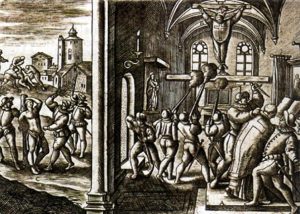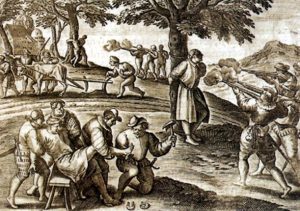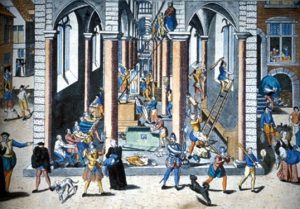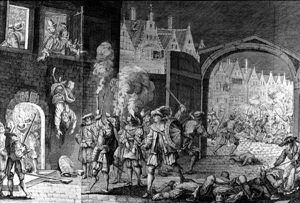Violence in all its forms
On the Protestant side iconoclasm was the main aspect of the first war of Religion. The Huguenots used ‘pedagogical’ violence against exemplary targets. Rather than people, they went after objects, churches, tombs and images.
Cathedrals were sacked, their precious objects melted. Sanctuaries were desecrated. Crosses were destroyed, crucifixes dragged along the streets before being beheaded. Wafers were given to the dogs, swine invaded churches. The royal cult was another target as the Huguenots questioned the sacred aspect of the monarchical power. Louis XIV’s tomb was desecrated: the tomb was violated, the statue beheaded, and in Bourges the body of Jeanne de France, Louis XI’s daughter, was dug up, the body dismembered and burnt. But the acts of violence committed by the baron des Adrets, on people in the Rhone valley and Dauphiné region and the execution of hundreds of them, were condemned by Jean Calvin.
On the Catholic side, to extinguish the heresy, all imaginable forms of violence were used: Calvinists were thrown naked into rivers, stoned, emasculated or disemboweled, nose and ears cut, eyes gouged before they were hanged. These acts had a ritual aspect, their cruelty set an example, the Huguenots being considered Satan’s emissaries.
The violence which was already present in the first war of Religion, was more or less intense in the later wars, but reached its apex with the Saint Bartholomew massacre. Stories testify of the horror of this insane collective violence sparing no one, be they elderly, female or children. During the siege of Paris, the leaders and pamphleteers of the League went wild and spread terror.





